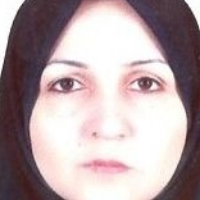Assessing the Quality of Life in the Historic District Neighborhoods and Factors affecting it Case Study: Historic District of Yazd City
One of the new trends that has had a tremendous impact on the process of changing the views and methods of urban planning in the second half of the twentieth century is the social and qualitative theories of development.Accordingly, the main purpose of this study is to assess the quality of life in the historical context of Yazd by using indicators appropriate to the nature of life and culture of its inhabitants. The historical fabric of Yazd was once dynamic and solid with a structure and function appropriate to the needs of its inhabitants. But today it faces many problems including the departure of the indigenous population and its replacement with non-indigenous people (Vaziri, 2017, p. 34; Sarai & Alyan, 2015, p. 82), various behavioral disorders and insecurity, low-income residents (Zangiabadi et al., 2015: 133), high unemployment, pettiness land plots (ibid., 145), the existence of incompatible uses in the vicinity of residential structures, low environmental quality, and the multiplicity of unsanitary space.The neighborhoods of the historical fabric of Yazd are not in a favorable situation in terms of stability (Sarai & Alian, 2015, p. 79; Zangiabadi et al., 2015, p. 154). However, life in this context- which shows the cultural identity of different periods of Yazd history- is ongoing and its body is largely responsible for urban life (Razeghi & Horandi, 2018, p. 70). Still, the goal of 73% of Yazd tourists is to visit historical places (Dehghanapour Farashah, 2016, p. 17). Therefore, the development of a development framework or any appropriate intervention that guarantees its sustainable survival depends on the awareness of the many quality of life in this fabric.Given the above issues, the research question is as follows:- What is the quality of life in the historical fabric of Yazd and which neighborhood has the highest quality of life?
In addition to the four dimensions of the type of index, the degree of specificity of the indicators (localization of indicators), scale, and time, the fifth dimension is dedicated to the importance of quality of life of different social groups in the city. The urban population may be distinguished from a large number of certain levels including class, age, lifestyle, gender, and ethnicity (ibid., 22). Therefore, the prevailing approach to examine the quality of life in the scale of Yazd historical context in this article is a combined approach (using objective and subjective indicators). In the first stage, after reviewing the existing theoretical foundations and previous researches, especially in Iran, a list of objective and subjective criteria was prepared. By referring to the neighborhoods and in-depth and exploratory interviews, the type of criteria and sub-criteria were reviewed and corrected in accordance with the "social and cultural conditions of the residents" and the "accessibility of the required data". The social group selected as the statistical population is the heads of households living in the neighborhoods in 2018 (time of data collection).
The second stage was dedicated to empirical studies in which the quality of life in 9 neighborhoods of the historical context of Yazd was measured from both mental and objective perspectives. At this stage and in the first step, to understand the level of residents' satisfaction with their living environment (measuring the quality of mental life) according to the research criteria, a questionnaire was developed and distributed among households living in neighborhoods and completed in a face-to-face interview. The total sample size was determined by Cochran's method, 371 households. The basis for determining the share of samples in neighborhoods is the relative share of the number of households living in each neighborhood out of a total of 10,795 households living in the historical context in the last official census of the Statistics Center of Iran in 2016. Cronbach's alpha coefficient was used to determine the reliability of the questionnaires and according to the value of Cronbach's alpha coefficient (0.768), it was concluded that the research tool has good reliability.In the second step of the second stage, based on the results obtained from completing the questionnaires and using the technique of "exploratory factor analysis", the factors affecting the quality of life and the role and importance of each in the quality of life in certain neighborhoods were determined.In the third step, the quality of the objective and mental life of the residents was measured in parallel. For subjective assessment, after processing the data obtained from the questionnaires, during the overlapping process of the layers related to each questionnaire and according to the scores obtained using the ANP technique, a zoning map of residents' satisfaction with the quality of life in the historical context was produced separately for each neighborhood. In parallel, to measure the objective quality of life of 9 neighborhoods, in a GIS environment, a one-by-one map of criteria and sub-criteria and finally a zoning map of the objective quality of life of the historical context of Yazd by each neighborhood from the overlap of layers (according to AN produced.
- حق عضویت دریافتی صرف حمایت از نشریات عضو و نگهداری، تکمیل و توسعه مگیران میشود.
- پرداخت حق اشتراک و دانلود مقالات اجازه بازنشر آن در سایر رسانههای چاپی و دیجیتال را به کاربر نمیدهد.


